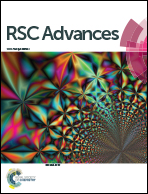Ultrasensitive and selective hydrazine sensor development based on Sn/ZnO nanoparticles
Abstract
Tin-doped zinc oxide nanoparticles (Sn/ZnO NPs) were prepared by a facile wet-chemical method using reducing agents in alkaline medium. The Sn/ZnO NPs were characterized by UV/vis, FT-IR, energy-dispersive X-ray spectroscopy (XEDS), X-ray powder diffraction (XRD), field-emission scanning electron microscopy (FESEM), and transmission electron microscopy (TEM). The Sn/ZnO NPs were deposited onto a flat glassy carbon electrode (GCE) with conducting binders (5% nafion) to result in a sensor that has a fast response towards selected hydrazine compounds by electrochemical approaches. Features including ultra-sensitivity, lower-detection limit, reliability, reproducibility, ease of integration, long-term stability, selective, and enhanced electrochemical performances were investigated in detail. The calibration plot is linear over different concentration ranges (2.0 nM to 20.0 mM). The sensitivity and detection limit were calculated as 5.0108 μA cm−2 μM−1 and 18.95 ± 0.02 pM (at a signal-to-noise-ratio, SNR of 3) respectively. Finally, the efficiency of the proposed chemical sensors can be applied and effectively utilized for the detection of toxic hazardous chemicals for the safety of the green environment on a broad scale.


 Please wait while we load your content...
Please wait while we load your content...